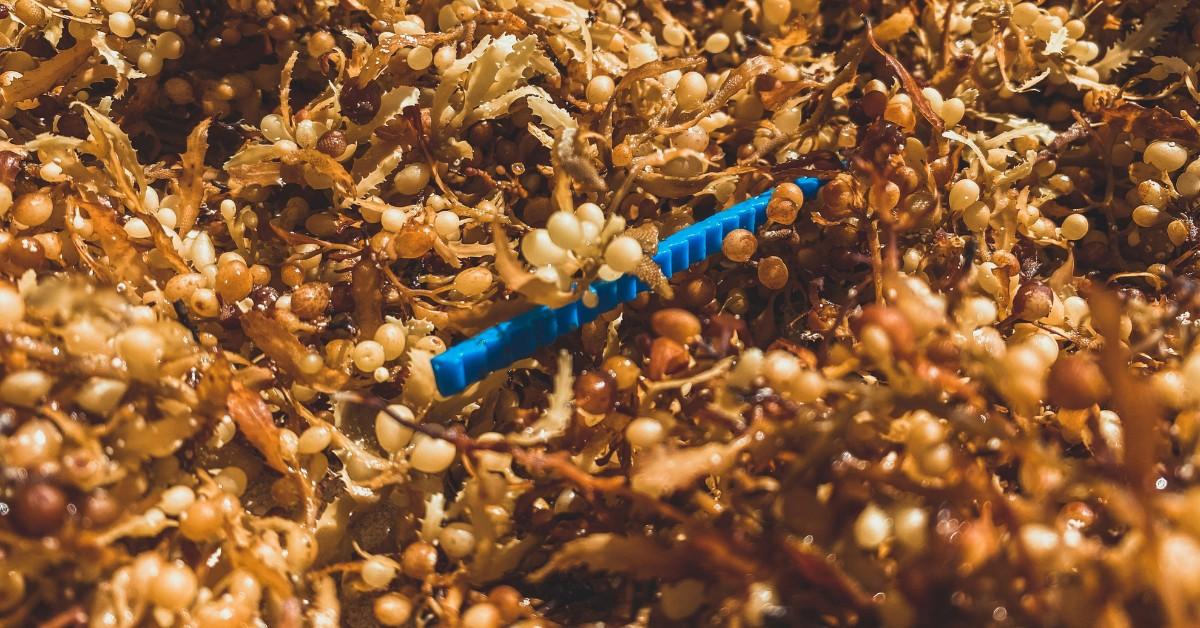Scientists Find Evidence of Microplastics in the Human Brain
We don't yet fully understand the dangers of microplastics in the human body.
Published Sept. 3 2024, 3:30 p.m. ET

Microplastics have been in the headlines a lot, thanks to scientists discovering them in areas that nobody would expect them to be. And while there may be some who are becoming desensitized to hearing news about microplastics being found in places like breast milk, human placentas, and even the human brain, experts are saying that it's time that we pay more attention to these tiny pieces of plastic, since we don't yet understand what this means for our heath.
In fact, finding microplastics in the human brain raises a new slew of questions about the plastic pollution, including what our long-term prognosis is as a society as our bodies continue to collect and store these bits of foreign materials.
Here's what you need to know about microplastics and the brain, including what the experts say we should be doing right now to prevent more of these pollutants from entering our major organs.

Microplastics wash up on the shore in Bermuda.
Researchers have discovered microplastics in the human brain.
Microplastics are any plastics that are smaller than 5 millimeters, and they can be found in the air, water, food, or environment around us. These tiny pieces are small enough that they can be ingested without us knowing, allowing them to infiltrate our bodies.
In May 2024, the National Institute of Health (NIH) preprinted a study, which was led by Matthew Campen, that claims to have found micro and nano plastics inside the human brain. (Note: the study has not yet been peer reviewed.)
The study reports that based on similar studies of other samples, these microplastics are found in much higher concentrations in the brain than they are in other organs that were tested, saying that plastics made up approximately 0.5 percent of the weight of the average brain sampled.
The implications of these findings are both groundbreaking and terrifying all at once, considering we don't know what impact plastics — and the chemicals used to create and manufacture them — will have on our long-term health.
Because of this, Cukurova University's Sedat Gündoğdu (who was not involved in the study but researches microplastics), told The Guardian that we need to "declare a global emergency" when it comes to plastic pollution.
And Gündoğdu isn't the only one worried about this new development. Matthew Campen, the toxicologist who helmed the study posted by the NIH, told The Guardian that the amount of plastics his team discovered in the brain samples was more than he "ever would have imagined or been comfortable with." He added that the brain has had some of the highest contents of plastic pollution he's seen during his research.
Can microplastics cross the blood-brain barrier?
Another alarming finding from Campen's study is the link that may have been uncovered between those who experienced dementia and Alzheimer's, and the amount of micro and nano plastics found in their brain samples.
According to the study, those brains appeared to have nearly 10 times the amount of plastic as those without a dementia diagnosis, raising questions about the link between pollution and brain health.
That may be because the blood-brain barrier — the protective layer that helps separate brain tissue from certain chemicals, pollutants, or pathogens — may not be as effective at keeping these types of particles away from our central nervous system.
While citizens of the world wait for legislators to take stronger stances against plastic pollution, those in the know are advising people to try and avoid unnecessary exposure to microplastics, which means limiting the amount of plastic that comes into contact with your food, especially when you're heating it up. All that being said, we now live in a society where completely avoiding microplastics is impossible, so don't let microplastics scare you too much.